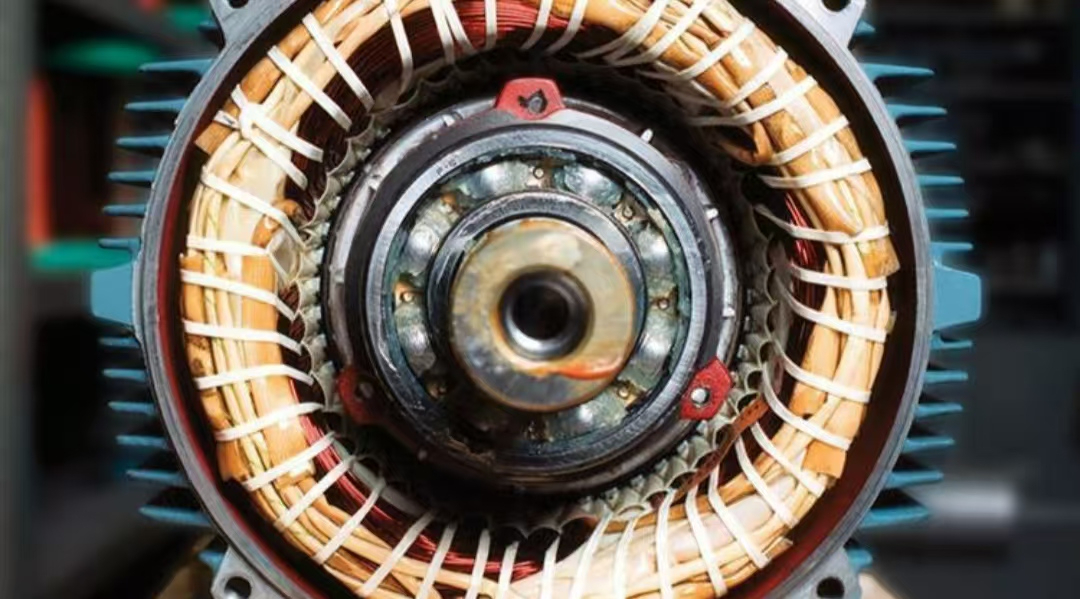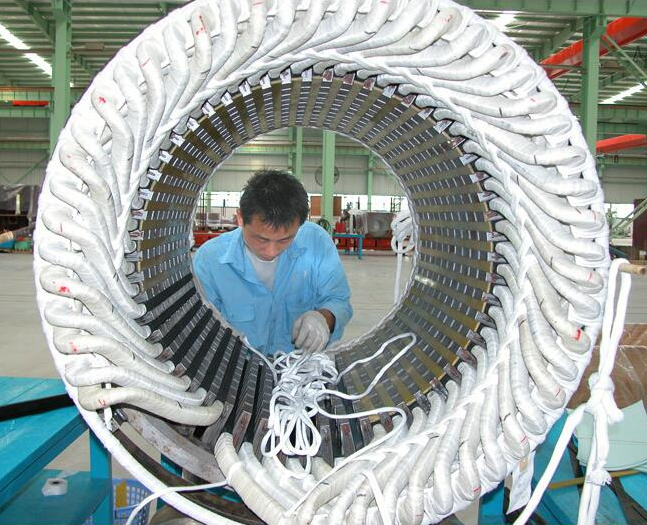1.Assemble mistakes . When the motor is not concentric with the driving equipment, the motor bears excessive loads, which eventually leads to metal fatigue. When the radial load on the extension end of the motor shaft is too large, it will cause the bending deformation of the motor shaft in the radial direction. When the motor rotates, the shaft is deformed by torsion in all directions, which eventually leads to the breakage of the motor shaft. The breakage position is usually near the bearing.
For motors connected by pulleys, when some customers supply pulleys to the output shaft of the motor, because the pulley is too heavy or the belt is too tightly installed, the output shaft of the motor will continue to be subject to variable stress during operation. The maximum bending moment of the motor output shaft will be produced near the bearing fulcrum of the output shaft, which will cause fatigue by repeated impact, causing the shaft to gradually crack and finally full fracture.
2.Excessive vibration of equipment and motor in operation. If the motor is not fixed firmly, such as running on the rack, the whole foundation is unstable and shaking in operation, which causes the unstable pulling force of the motor belt and the damage of the shaft when the pulling force is large or small.
3.Shaft processing stress slot does not meet the requirements. Most of the problems occur in the location of the axle extension root. A large number of case studies show that the processing of the R angle of the axle extension root is not standardized, which results in the concentration of stress in the location. When the motor runs, the axle diameter and the radial alternating stress cause the fracture.
4.Crack fracture at welding position of plate axle. This is mainly for high-power motors, the welding process of the sheet will lead to stress concentration. In the manufacturing process, necessary measures should be taken to reduce or eliminate the stress, such as stifling, vibration, processing due to stress grooves. If the operation is not proper, this position is the biggest hidden danger of shaft fracture.
Basic Requirements for Motor Connection
The motor may be driven by coupling, spur gear and belt pulley, but for all 2-pole motors, 4-pole motors above 37 kW, 6-pole motors above 75 kW and 8-pole motors above 55 kW, belt drive is not suitable. (If driven by a belt pulley, the bearing may be damaged in advance or the rotating shaft may be broken.)
When the belt pulley is used to drive, the axis centerline of the motor should be parallel to that of the load shaft, and the belt centerline should be perpendicular to the axis centerline. When using coupling transmission, the center line of motor shaft and the center line of load shaft should coincide (for example, improper installation, vibration will occur when the motor runs, leading to bearing damage in advance, and serious damage will result in motor and equipment damage.



